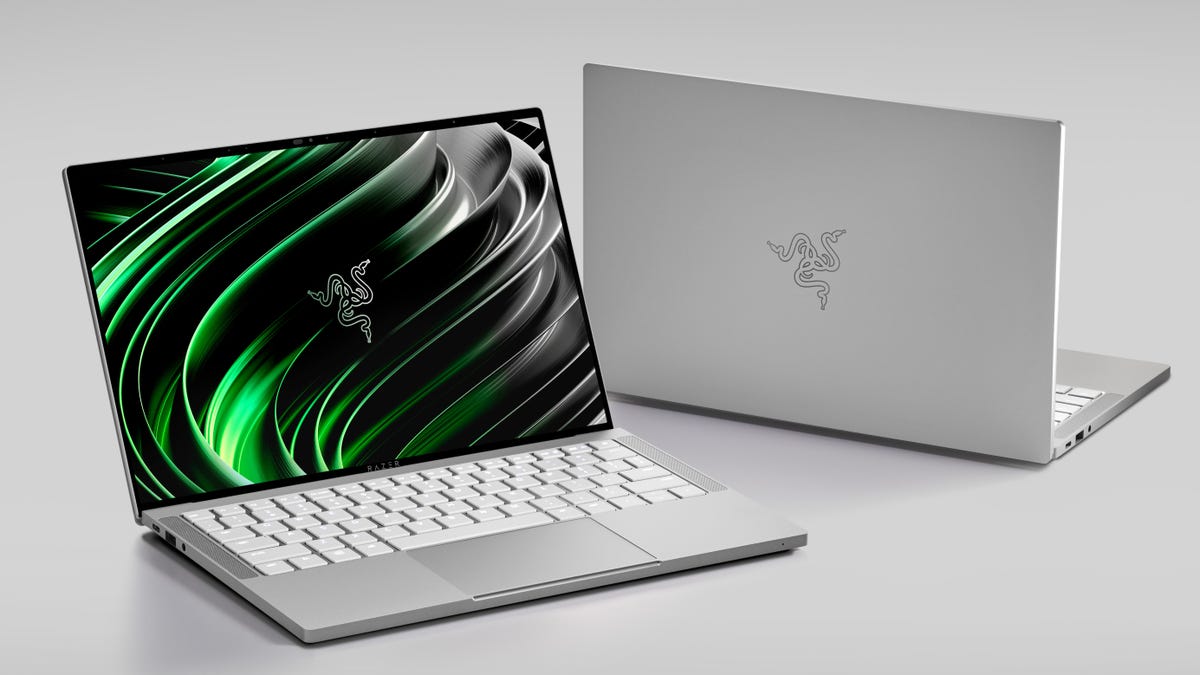Razer Is Trying to Break Out of Gaming with the Razer Book 13 - 3 minutes read
 Image : Razer
Image : RazerOver the past couple of years, Razer has been gradually expanding its portfolio outside of gaming with products like the Razer Blade Studio and its Pro Click peripherals. But now Razer looks like it’s finally g etting serious about general productivity with the Razer Bo ok 13.
Advertisement
While at first glance the Razer Book 13 might appear like a silver version of the Razer Stealth, there are a handful of important differences. The first major one is that as a system designed strictly for productivity, the Book 13 doesn’t come with an option for a discrete GPU, which means you’re stuck with integrated graphics (though you can connect the Book 13 to one of Razer’s external GPUs if you want). That means that even though you might be able to play some older game on the Book when you’re away from home you won’t really have the option to play newer AAA titles.
Image : Razer
Advertisement
Additionally, unlike the Stealth, the Book 13 features a 16:10 aspect ratio screen with three different configs: a matte, non-touch 1920 x 1200 display, a 1920 x 1200 touchscreen, and a 4K touchscreen. So once again, while this choice makes the Book 13 slightly less ideal for watching movies or playing games, that 16:10 aspect ratio provides more vertic al screen real estate, which is critical if you’re writing essays, using spreadsheets, or editing photos or videos.
Finally, while the Book 13 features an aluminum unibody design and dual upward-firing speakers like other Razer laptops, the Book is about 10% lighter than Razer Stealth, despite both being 13-inch systems.
Elsewhere, even though the Book 13 isn’t meant for gaming, it’ll still have strong specs including your choice of 11th-gen Intel Core i5 or i7 CPUs, up to 16GB of 4267-MHz RAM, a selection of SSDs, and Intel Iris Xe integrated graphics. Port selection on the Book 13 is also much better than average with Razer including a microSD card slot, a full-size HDMI port, two Thunderbolt 4 ports, a USB 3.2 Type-A port, and a 3.5mm audio jack.
Image : Razer Image : Razer Image : Razer Image : Razer Advertisement You can skip ad after 1 second You can go to the next slide after 1 second Continue Image : Razer Image : Razer Image : Razer 1 / 7
Advertisement
The Book’s battery life also looks respectable, with Razer claiming the Book 13 should last around 14 hours on a single charge. In fact, while the base Book 13 doesn’t have the specs to be Intel Evo certified (due to its lack of a touchscreen), the rest of the Book 13 models are, which means they have been tested by Intel to deliver things like fast wake times, bright screens, and Wi-Fi 6, and more.
And while the Book 13 is focused on productivity, Razer hasn’t entirely ditched its gaming heritage, which means you get full per-key RGB lighting and Razer Chroma integration, so you can set up basic single color keyboard backlighting when your working, and then turn on the full rainbow at night to relax.
Advertisement
So even though Razer isn’t the company you’d normally turn to for a general productivity laptop, the Razer Book 13 is shaping up to be an interesting alternative to something like a n HP Spectre or Dell XPS.
The Razer Book 13 will start at $1,200 (for a FHD+ non-touch display, 11th-gen Core i5 CPU, 8GB of RAM, and 256GB SSD) and is expected to go on sale sometime later this month.
Source: Gizmodo.com
Powered by NewsAPI.org